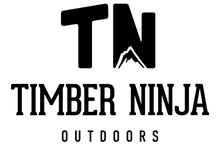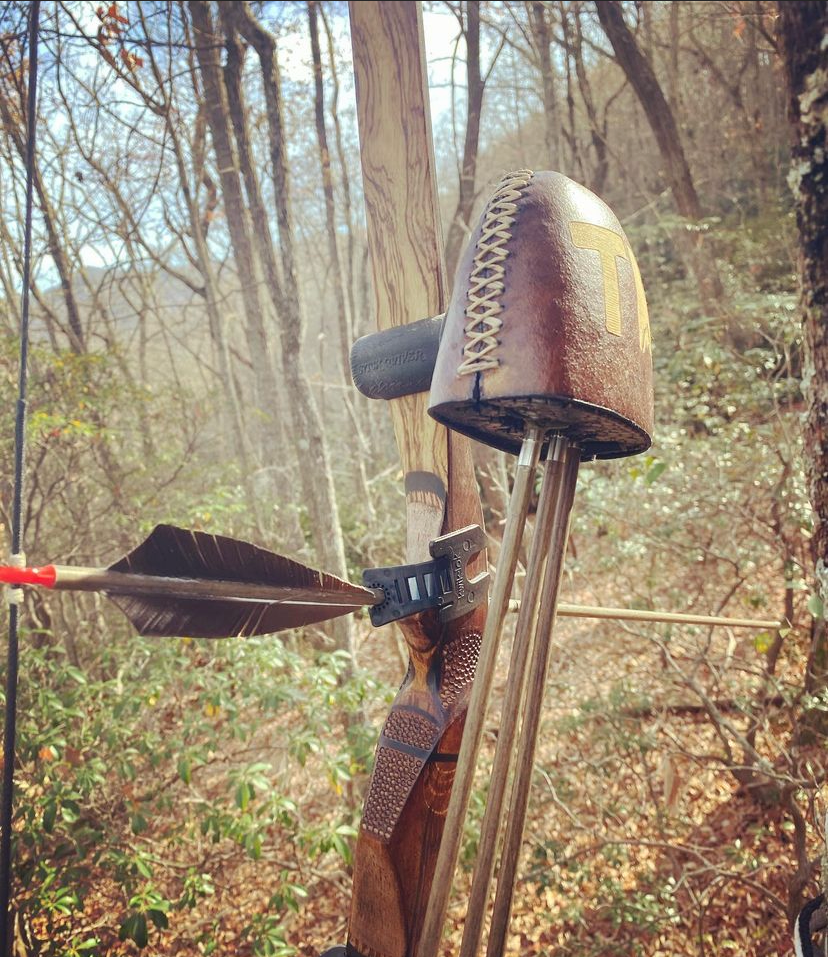
I Wanna Go Trad
by Jason Redd
"Hey man I am wanting to go trad, can I ask you a few questions?” is a consistent inquiry that I receive on a weekly and sometimes daily basis.
I have only used a single string for archery for four years and hunt this way 100 percent of the time. I’d rate myself a three-stripe blue belt at best. I’m definitely not a master. However, I consider traditional bow hunting a martial art therefore, I take it seriously and I’m a student of it. I’ve witnessed the interest and media attention explode, especially over the last two years. It’s almost comical to see how many companies and content creators have added single string bows to their material. As someone who loves the art of traditional archery and have met some great friends through the community, I love seeing the growth. However, I’m a critic of why people choose the weapon and this can bring concern for me.
Is traditional archery right for you? One of the first questions I ask someone that is considering is why do you want to get into traditional archery? I usually get two types of responses: “I think it looks cool” and “I want to increase the challenge of archery and improve my hunting skills”. Can you guess which response I get the most? I admit it feels very romantic to carry such a simple weapon around the woods and damn they are beautiful pieces of art! It's one thing to “look the look” and another to be effective with the weapon you choose to carry.
It's no secret that compound bows were invented to make archery easier and more efficient. Wheels and draw stops incorporated into bows take out potential areas of error and make the process more efficient. One of the main components of shooting a single string bow accurately and consistently is maintaining a repetitive anchor point, so that each arrow is released with the same amount of force. There are tons of resources available through The Push, Tom Clum, Joel Turner, and many more that can get you started on the right path of learning the fundamentals. Another important factor that you can’t buy or source is PRACTICE. I was a person that shot my compound all year because I loved shooting my bow and wanted to improve my skills with the weapon. In all honesty, I don’t think I had to shoot my compound 12 months a year to be accurate and deadly in the whitetail woods. However, when switching over to a single string, it is imperative that you shoot weekly and daily, if possible. Muscle memory of solid form and mechanics is the foundation of being consistently accurate with traditional equipment. It’s a lot of work and it can be frustrating sometimes, but if it wasn’t hard it wouldn’t be fun for most of us.
Another common question that I receive is: why do I shoot traditional? I’ve been a bowhunter since I was 13 years old. I’ve always been intrigued by traditional archery because of the simplicity and mastery it takes to be effective. I procrastinated at first because I was intimidated. I assumed it took a lot of skill to be accurate and that it also cut the shot distance on an animal essentially in half. I was in a stage of my hunting that I was more concerned about the “kill” than the “process of hunting”. Fast forward to four years ago. I was flirting with the idea of going to traditional archery because I really enjoy skills that test me mentally and physically. Besides hunting I enjoy rock climbing, endurance sports, and Jiu Jitsu. These are hobbies that require a lot of training, both mind and body. The first YouTube videos I remember watching were those created by Clay Hayes. Watching him stalk and kill an elk with a selfbow had me jazzed! It seemed very challenging but I thought about how badass the experience must feel when you connect with a simple stick and string.
I was fortunate enough to have Mike Treadway, a local bowyer who owns Treadway Longbows. I called Mike and said I was interested in learning traditional archery; so he said come on out and shoot some bows. I went in knowing nothing about shooting a trad bow, except that I needed to pull the string back and release. He taught me his method on the first day, which is three under and shooting gap. He could tell with every shot what went wrong with the form. I left there with a 41# bow and a worn out tab, but ready to shoot until my fingers bled. Mike is an OG Trad guy that doesn’t care about the latest in arrow or broadhead technology. He is in it to shoot animals as close as possible. He’s harvested multiple animals including an elk at eight yards with a 41# bow and 420gr arrow which he got a pass through. The best information he told me is to shoot as much as possible, set the bow down if you’re casting bad shots, and just have fun. I sometimes have to remind myself of these simple tips because it can be very challenging.
Beyond the challenge of learning to shoot the traditional bow effectively, another major obstacle is getting that animal into an effective range. Most seasoned traditional whitetail hunters consider this to be fifteen yards or less. I did a rough average in my head of all the animals I’d killed and came up with eighteen yards being my average killing distance. So, I thought “hey it can’t be that hard to get a buck in range.” My goal for the first year was to harvest a legal whitetail with my 41# longbow. I remember the morning of my first encounter with a doe. I’m normally “chill as a cucumber” when a target animal is coming in and normally don’t get excited until after the shot or the animal leaves, but this time I was about to fall out of my tree. I missed the first two does at fifteen yards before arrowing one at nine yards! Since then, I’ve mainly focused on pursuing mature bucks because the art of putting the strategic pieces together is in itself a martial art. Most guys will not ever kill or perhaps see a P&Y class whitetail, so the art of trying to get them into sub 20 yards is on another level. For the first two years, I had many encounters at 30-35 yards, so I really had to step up my skills to be able to identify and predict essentially where he’s going to put his foot. I was able to kill my first mature buck with traditional equipment in my third year, after missing two others. The skill that’s required to do this is something you can’t buy and it's called Woodsmanship. Woodsmanship is only gained by time and experience. My friends at “The StickBoys Podcast” have a great podcast series on Woodsmanship. I highly recommend it to anyone regardless of what weapon you choose.
My hope is to try to help you determine if traditional archery is right for you. It is a highly challenging, but extremely rewarding experience. There are tons of resources out there to help get you going down the road, but you have to realize you’re the gas in the engine. I can say with confidence that if you’re not a dedicated shooter with your compound and you’re mainly after the kill, then traditional archery isn’t for you. You’re going to struggle, fail, and eat pots of tag soup. Social media is a great resource for information, but sometimes it is a little cloudy. When it comes to recognized hunters on the web, you mainly only see their successes and rarely hear about their failures. I have a lot of new trad hunters share their frustration with me and say it looks like everyone else is successful. I can tell you from knowing a lot of successful traditional hunters that most have more bad days than good. But again, if it was easy it probably wouldn’t be fun to most of us. Just enjoy the ride and have fun!
As mentioned, there are a lot of resources out from The Push, Tom Clum, Joel Turner and many others that can help you with bow, arrow selection, shot mechanics, etc. I’d also suggest that if you’re interested and serious about traditional archery I’d look at joining all or at least one of these groups: Professional Bowhunters Soceity, Compton Traditional Bowhunters, and Traditonal Bowhunter Magazine. I’ve met nothing but great people through traditional archery and they want to help new hunters succeed. I’ve also met some of the most successful and humble hunters that I’ve ever come across. Hope this information helps you determine if traditional bowhunting is for you. Just remember to have fun!!




